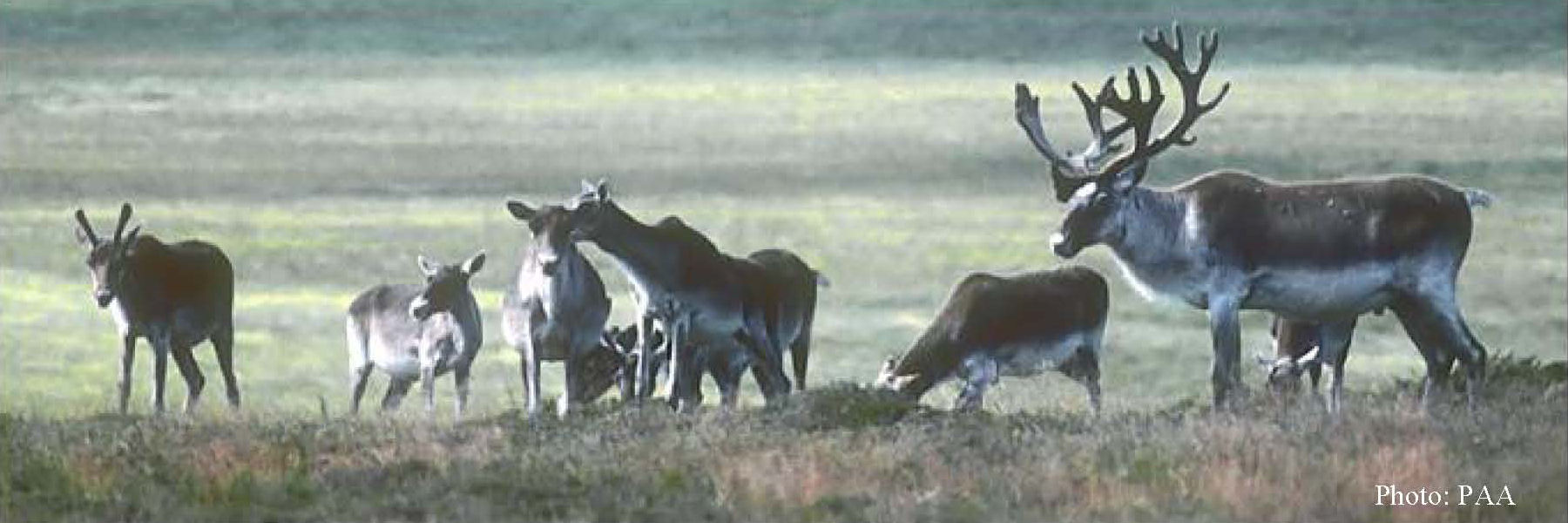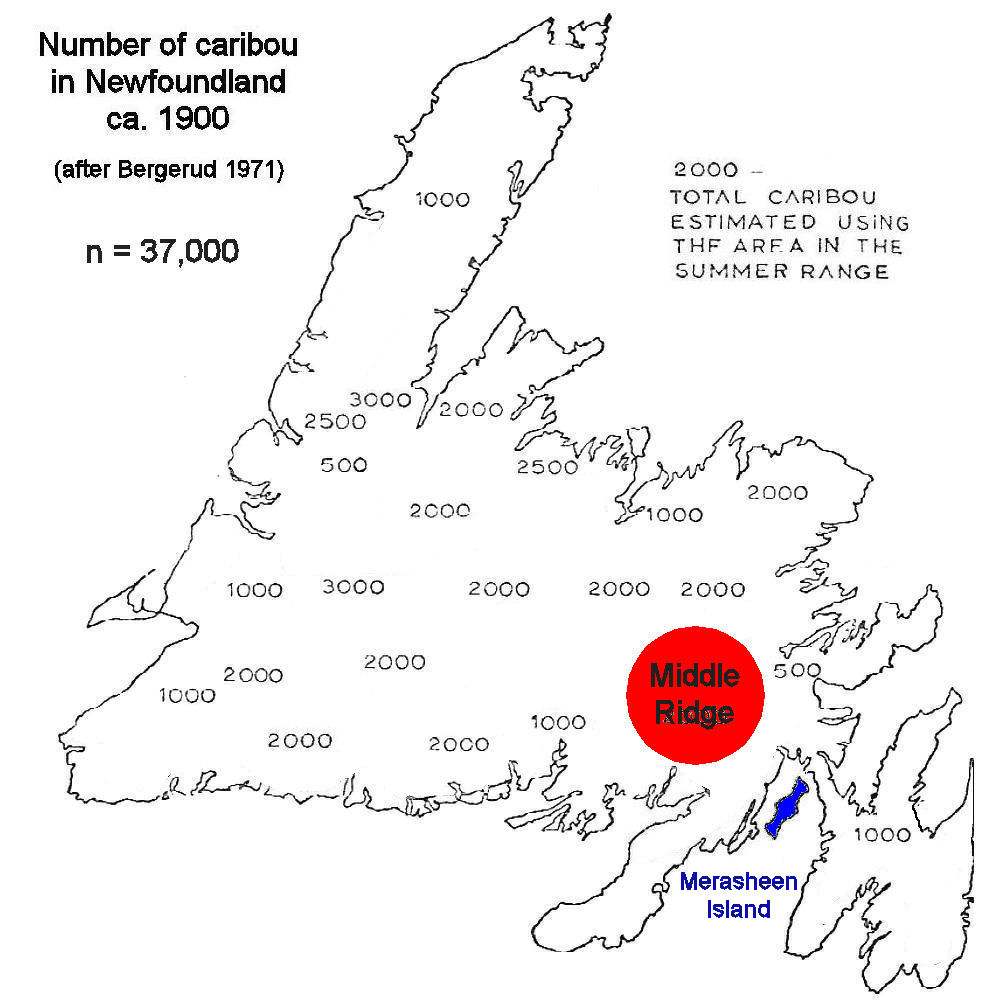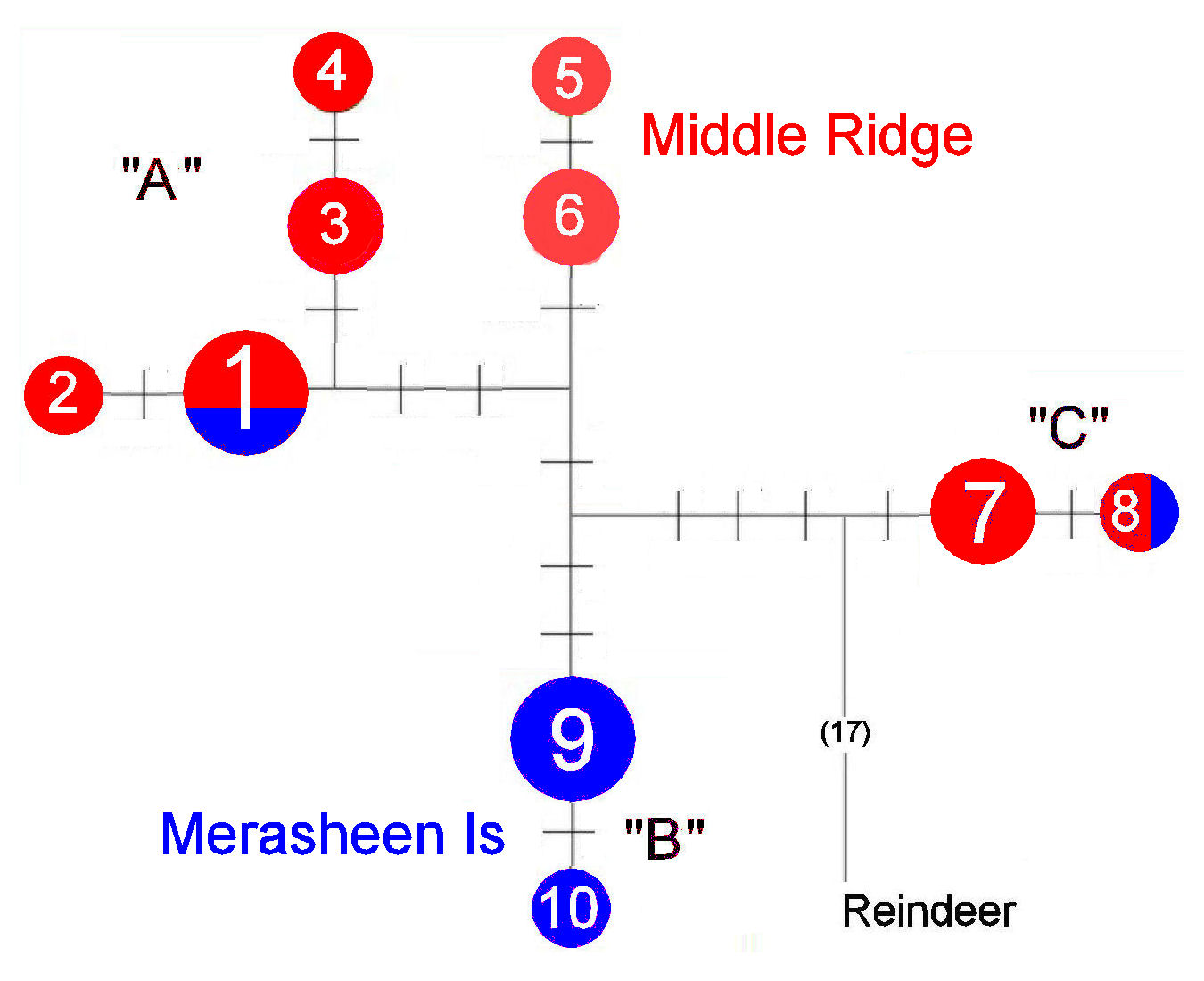


Genomics for Wildlife Conservation and Management:
Studies of the Newfoundland Caribou (Rangifer)
(Corinne Wilkerson, M.Sc. candidate, work in progress)
Caribou (Rangifer tarandus) were formerly abundant on the island of Newfoundland. From an estimated 40 ~ 200,000 animals in 1900, caribou numbers on the island declined to near extirpation in the 1930s, remained at about 6,500 animals in the late 1950s, and have since increased to ca. 80,000 individuals distributed among a series of herds managed in separate hunting units. Population numbers are again decreasing, and natural population cycles appear to played a role in this decline. Expected consequences of such reduction in population include loss of genetic variation and divergence of local populations through genetic drift. Preliminary genetic studies of two genes (~2Kbp) in the mitochondrial DNA genome from two herds (Middle Ridge and Merasheen Island) identify at least three distinctive haplogroups (genetic lineages). Two of these are essentially localized to Middle Ridge, whereas the third is characteristic of an island population known to have been transplanted from the interior in the 1970s. Genetic diversity is less in the island population, which is dominated by a single haplotype.